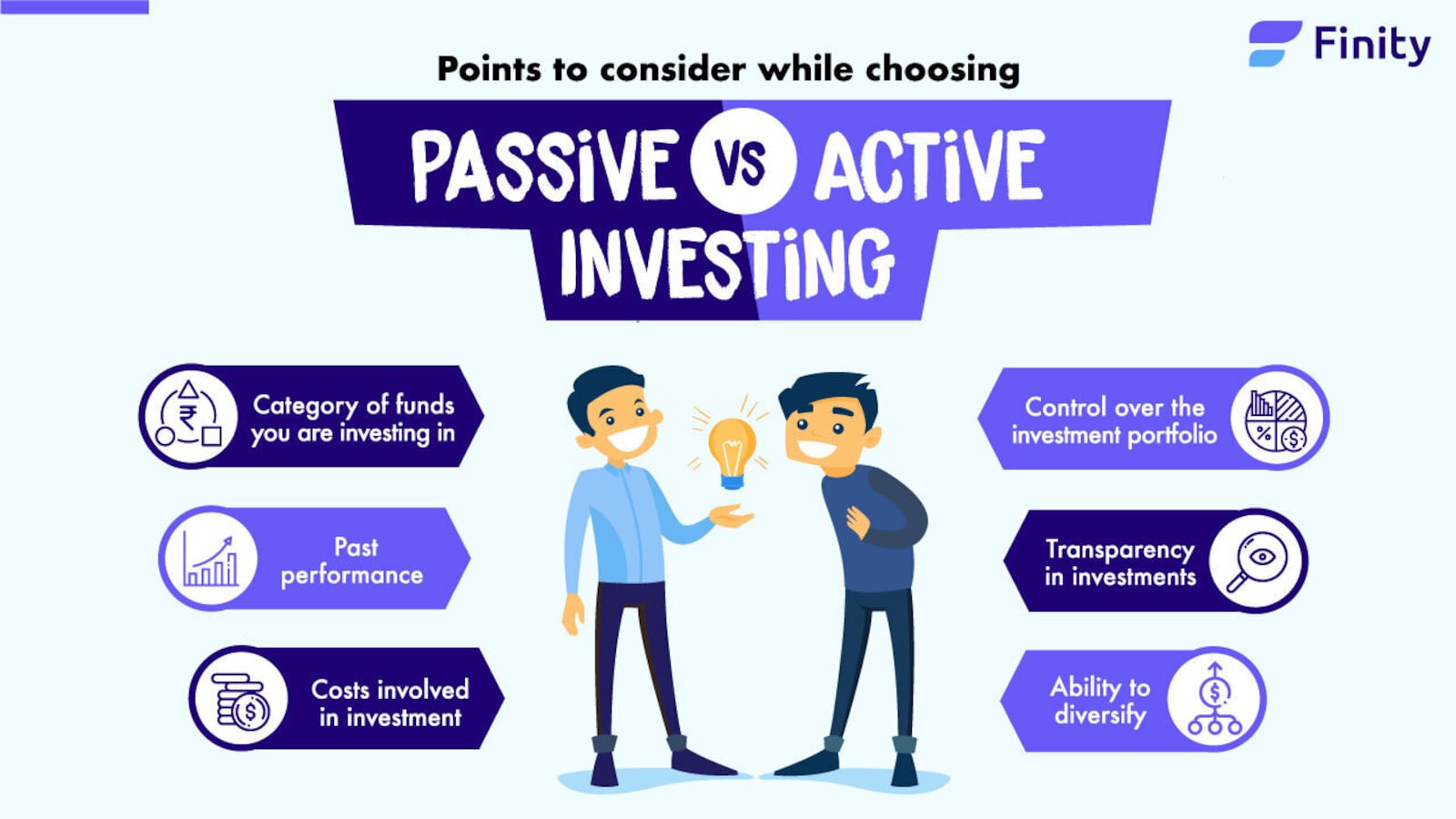Passive vs. Active Investing: Which is Right for You?
The debate between passive and active investing continues to capture the attention of both novice and seasoned investors. Each approach offers unique benefits and challenges, with the choice ultimately resting on individual goals, risk tolerance, and investment philosophy. Understanding these strategies is essential for making informed financial decisions.
Defining Passive and Active Investing
At its core, investing boils down to two overarching strategies: passive and active. Each represents a fundamentally different way of engaging with the markets.
- Passive Investing: This strategy involves buying and holding a diversified portfolio over a long period, often through index funds or exchange-traded funds (ETFs). Passive investors aim to mirror the performance of specific market indices like the S&P 500, prioritizing low costs and minimal involvement.
- Active Investing: Active investing is a hands-on approach where investors—or professional managers—attempt to outperform the market by picking individual stocks, bonds, or other assets. This method relies on in-depth research, timing, and sometimes, instinct.
While both strategies share the goal of financial growth, they diverge in their methodologies, costs, and risks.
Pros and Cons: Weighing the Two Strategies
Choosing between passive and active investing requires a clear understanding of the advantages and disadvantages each offers.
Passive Investing: Advantages and Drawbacks
- Advantages:
- Cost-Effective: Passive funds generally charge lower fees since they require less management.
- Consistency: By tracking an index, passive investments provide steady returns that often match the market’s overall performance.
- Simplicity: With fewer decisions to make, this strategy reduces the complexity of investing.
- Drawbacks:
- Limited Upside Potential: Since passive funds follow the market, they rarely outperform it.
- Lack of Flexibility: Passive strategies can’t adapt quickly to changing market conditions.
Active Investing: Advantages and Drawbacks
- Advantages:
- Opportunity for Outperformance: Skilled managers can generate returns that exceed market averages.
- Customization: Active strategies can be tailored to specific goals or risk tolerances.
- Flexibility: Active investors can quickly pivot in response to market shifts.
- Drawbacks:
- Higher Costs: Management fees and transaction costs can eat into returns.
- Risk of Underperformance: Not all managers can consistently beat the market.
- Time-Intensive: Active investing demands significant time for research and analysis.
Factors to Consider When Choosing Your Approach
Your choice between passive and active investing should align with your personal circumstances and financial objectives.
Key considerations include:
- Time Horizon: Passive investing is typically more suitable for long-term goals, such as retirement savings. Active investing might appeal to those with shorter horizons who seek higher returns in a shorter time frame.
- Risk Tolerance: Investors comfortable with volatility may lean toward active investing, while risk-averse individuals might prefer the stability of passive strategies.
- Cost Sensitivity: If minimizing fees is a priority, passive investing is generally more appealing. Active management, while potentially more lucrative, can come with significant expenses.
- Investment Knowledge: Those with extensive market knowledge may enjoy the challenge of active investing. For others, passive strategies offer a lower-effort path to market participation.
Combining the Best of Both Worlds
Investors aren’t limited to choosing one approach exclusively. A blended strategy, leveraging the strengths of both passive and active investing, can provide balance.
- Core-Satellite Strategy: This method involves building a core portfolio of passive investments (such as index funds) for stability, complemented by active investments in specific sectors or assets for potential growth.
- Dynamic Allocation: Market conditions and personal circumstances change over time. Adjusting the balance between active and passive strategies can help optimize returns while managing risk.
- Utilizing Professional Expertise: Many financial advisors and wealth managers employ a mix of active and passive strategies, combining the low costs of passive investing with the growth opportunities of active management.
Conclusion
The choice between passive and active investing is not about selecting a “right” or “wrong” path but rather determining which approach best suits your financial journey. Passive strategies provide simplicity, low costs, and reliable market-matching returns, making them ideal for those focused on long-term growth. Active investing, on the other hand, offers the potential for higher returns and greater flexibility, appealing to individuals willing to invest time and accept risk.
By evaluating your financial goals, risk tolerance, and investment knowledge, you can decide whether to pursue one strategy or blend the two. The most important factor is creating a plan that aligns with your aspirations and provides peace of mind in your financial future.
- Morningstar: What You Need to Know About Passive and Active Investing
- Forbes: The Pros and Cons of Active and Passive Investing





















![[ℕ𝕖𝕧𝕖𝕣] 𝕊𝕖𝕝𝕝 𝕐𝕠𝕦𝕣 𝔹𝕚𝕥𝕔𝕠𝕚𝕟 - Is Trump Dying? Or Only Killing The Market?](https://cdn.bulbapp.io/frontend/images/a129e75e-4fa1-46cc-80b6-04e638877e46/1)










































